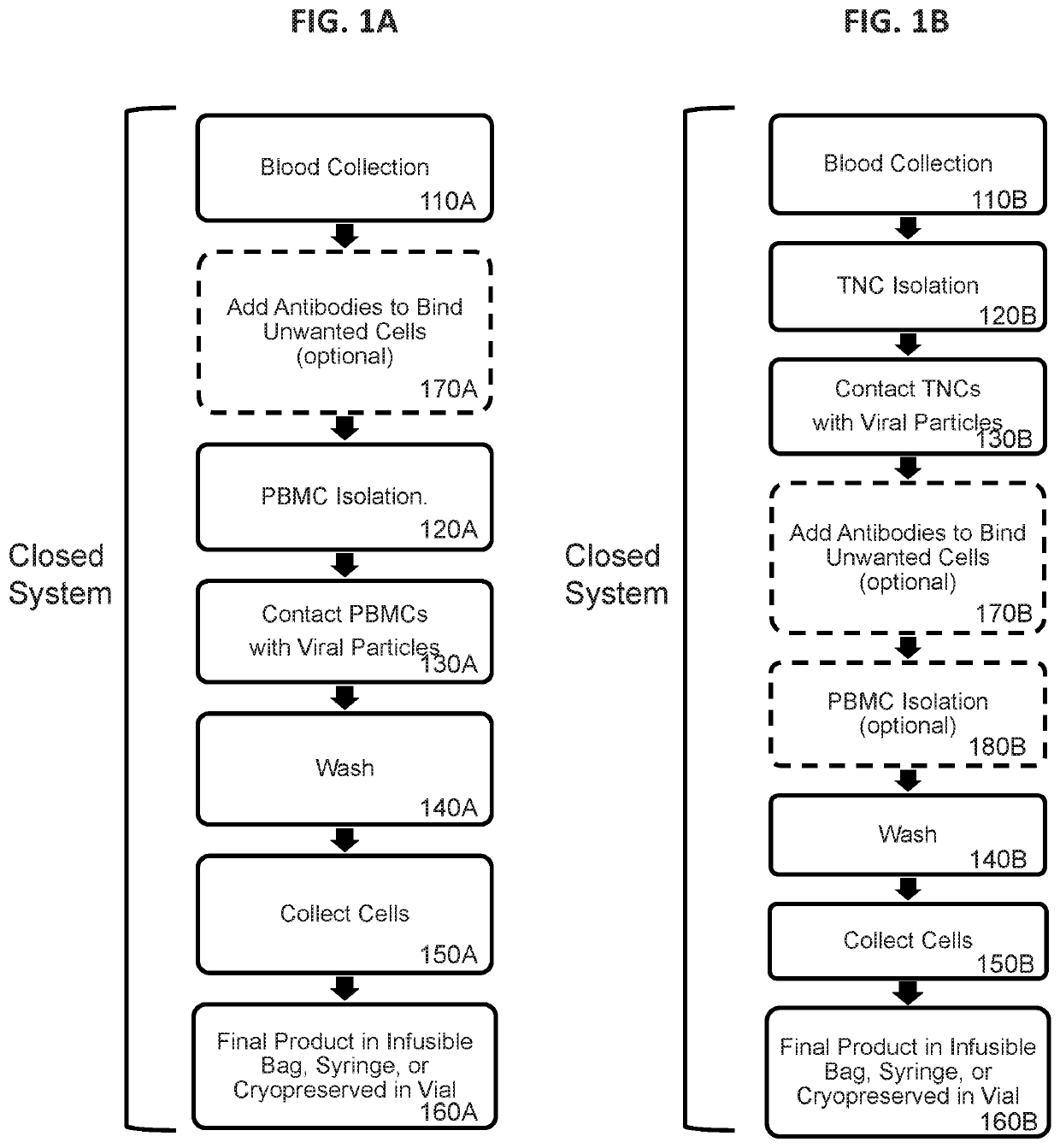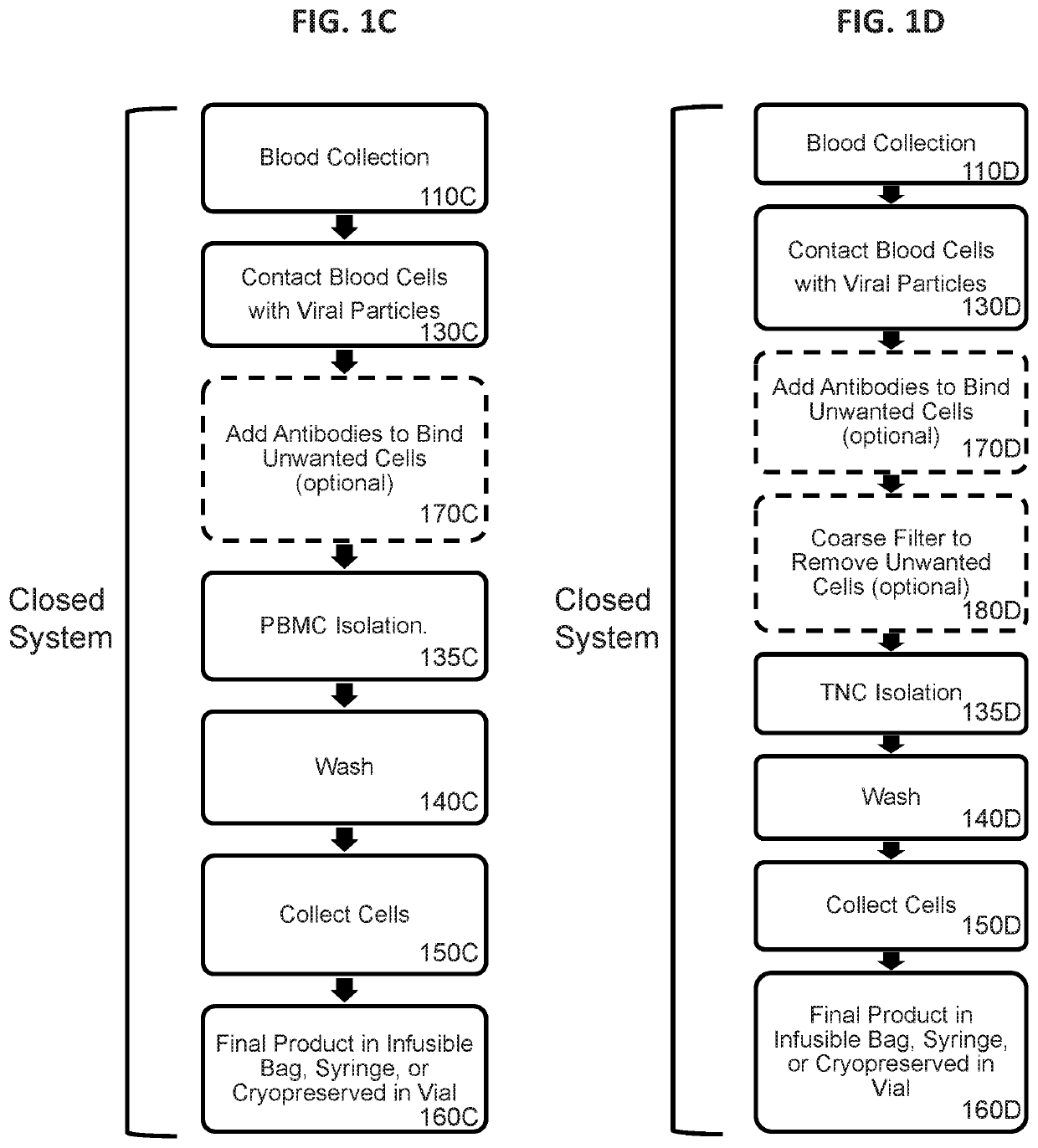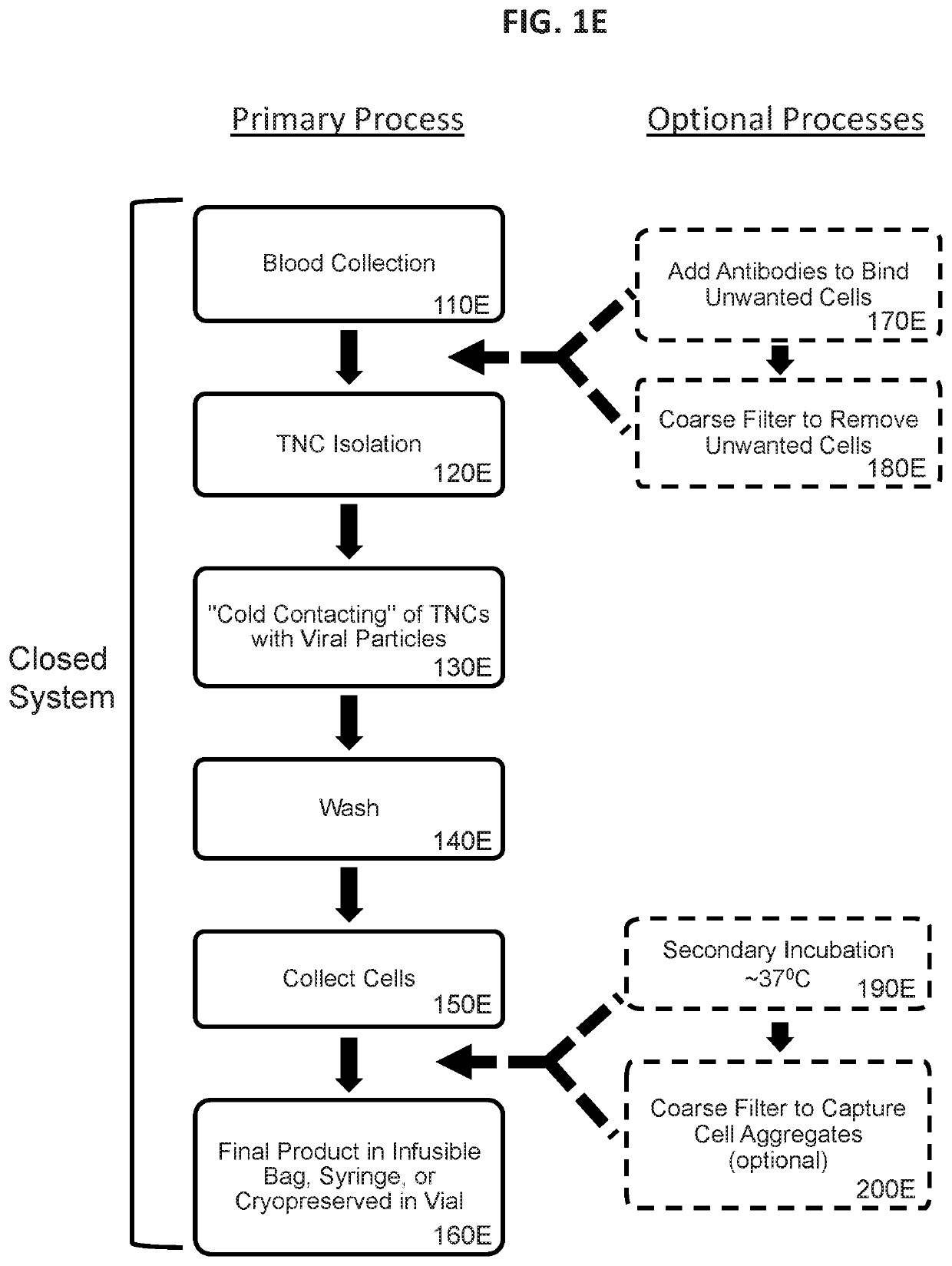Methods and compositions for the modification and delivery of lymphocytes
- Summary
- Abstract
- Description
- Claims
- Application Information
AI Technical Summary
Benefits of technology
Problems solved by technology
Method used
Image
Examples
Example
Example 1. Materials and Methods for Transduction Experiments
[0838]This Example provides materials and methods used in experiments disclosed in subsequent Examples herein.
Recombinant Lentiviral Particle Production by Transient Transfection.
[0839]293T cells (Lenti-X™ 293 T, Clontech) were adapted to chemically defined suspension culture by serial expansion in Freestyle™ 293 Expression Medium (animal origin-free, chemically defined, and protein-free), (ThermoFisher Scientific) followed by repeated single cell by serial dilution in 96 well plates to generate a master and working cell bank of cells named F1XT cells, and were used as the packaging cells for experiments herein unless noted otherwise.
[0840]Where noted, a typical 4 vector packaging system included 3 packaging plasmids that encoded (i) gag / pol, (ii) rev, and (iii) a pseudotyping element such as VSV-G. The 4th vector of this packaging system is the genomic plasmid, a third generation lentiviral expression vector (containing a...
Example
Example 2. Transduction Efficiency of Unstimulated PBMCs Exposed for 4 Hours to Retroviral Particles Pseudotyped with VSV-G or Influenza HA and NA and Optionally Copseudotyped with Envelopes Derived from VSV-G, MV, or MuLV, and Further, Optionally, Displaying an Anti-CD3 scFv on their Surfaces
[0854]In this example, lentiviral particles pseudotyped or cospeudotyped with various different envelope proteins and optionally displaying a T cell activation element, were exposed to unstimulated human PBMCs for 4 hours and transduction efficiency was assessed. The cell processing workflow was as shown in FIG. 1A with the exceptions that the optional step of 170A was not performed, the final cells of step 160A were placed in culture, and only portions of the process were performed in a closed system.
[0855]Recombinant lentiviral particles were produced in F1XT cells. The cells were transiently transfected using PEI with a genomic plasmid and separate packaging plasmids encoding gag / pol, rev, a...
Example
Example 3. Efficient Genetic Modification of Unstimulated Lymphocytes by Exposure of Whole Blood to Recombinant Retroviral Particles for 4 Hours Followed by a PBMC Enrichment Procedure
[0861]In this example, unstimulated human T cells and NKT cells were effectively genetically modified by a 4 hour incubation of a reaction mixture that included whole blood and retroviral particles that were pseudotyped with VSV-G and displayed a T cell activation element on their surface. PBMCs were subsequently isolated from the transduction reaction mixture using a traditional density gradient centrifugation-based PBMC enrichment procedure. The cell processing workflow was as shown in FIG. 1C with the exceptions that the optional step of 170C was not performed, the final cells of step 160C were placed in culture, and only portions of the process were performed in a closed system. Transduction of CD3+ cells was assessed by expression of the eTag transgene using flow cytometry.
[0862]Viral supernatants...
PUM
 Login to View More
Login to View More Abstract
Description
Claims
Application Information
 Login to View More
Login to View More - R&D
- Intellectual Property
- Life Sciences
- Materials
- Tech Scout
- Unparalleled Data Quality
- Higher Quality Content
- 60% Fewer Hallucinations
Browse by: Latest US Patents, China's latest patents, Technical Efficacy Thesaurus, Application Domain, Technology Topic, Popular Technical Reports.
© 2025 PatSnap. All rights reserved.Legal|Privacy policy|Modern Slavery Act Transparency Statement|Sitemap|About US| Contact US: help@patsnap.com



